Stars are celestial objects and massive luminous spheres made of plasma. In the vast expanse of our Milky Way galaxy alone, there are billions of these stars, including our very own Sun. More recently, we have come to understand that some of these stars also host their own planets.
The evolution of stargazing
In modern times, it is now possible to easily purchase a telescope and observe the night sky or even utilize online telescopes on our website. Throughout history, stars have held significant importance in various cultures. They have been integrated into myths, religious narratives, and have even served as the earliest tools for navigation. This is why astronomy is regarded as one of the oldest scientific disciplines. The development of telescopes and the uncovering of the laws of motion and gravity in the 17th century allowed us to comprehend that all stars bear resemblance to our Sun and, as a result, abide by the same physical principles.
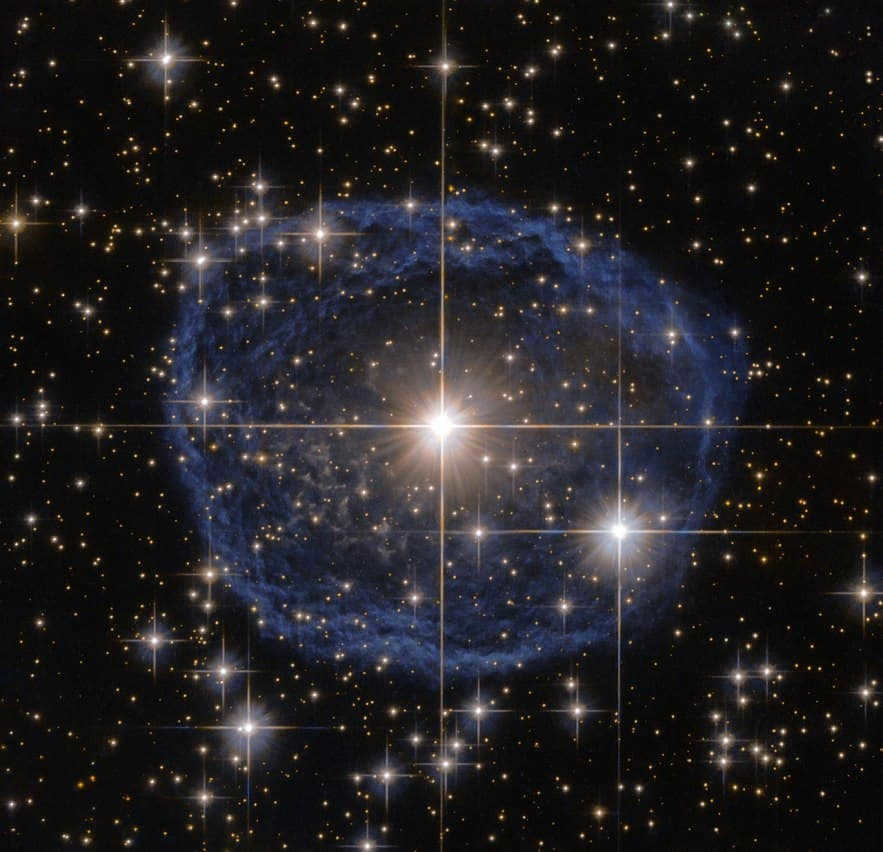

Captured by the Hubble Space Telescope, this photograph showcases the final stages of a dying star.
The advancements in photography and spectroscopy during the 19th century revolutionized our understanding of stellar composition and the principles of motion, leading to the emergence of astrophysics. In 1937, the first radio telescope was invented, enabling the detection of previously invisible stellar radiation. Finally, in 1990, the groundbreaking Hubble Space Telescope was launched, providing humanity with unprecedented glimpses into the depths of the Universe. Our website offers a collection of high-quality Hubble photos showcasing various celestial bodies.
Identifying the Celestial Bodies of the Universe
In ancient times, individuals lacked the technological advancements that we possess today, so they attributed images of various creatures to celestial objects. These groupings of stars became known as constellations, and individuals would create myths to help remember their names. Astonishingly, many of these names have endured and are still in use today.
In the contemporary world, there are a total of 88 constellations, with 12 falling into the category of zodiacal constellations. The brightest star in each constellation is designated as “alpha,” the second brightest as “beta,” and the third brightest as “gamma.” This pattern continues until the end of the Greek alphabet. Some stars even represent specific body parts. For instance, Betelgeuse, the brightest star in the constellation Orion (designated as Orion’s Alpha), is referred to as the “arm (armpit) of a giant.”
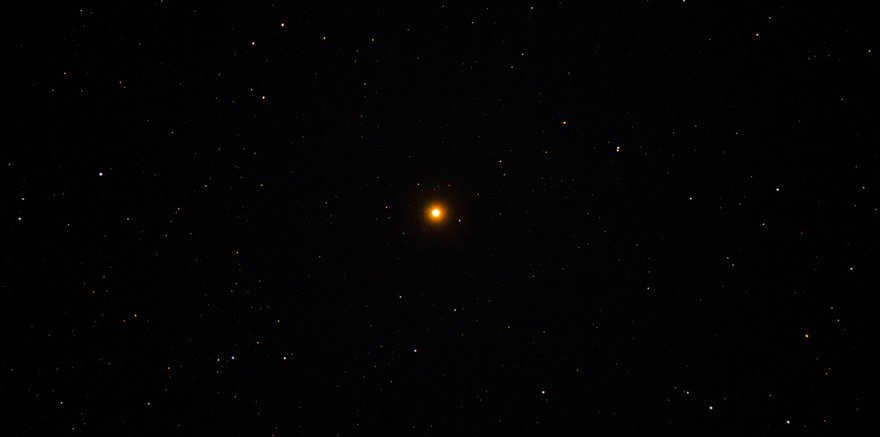
The red supergiant star Betelgeuse is located relatively close to Earth.
It is worth noting that throughout history, numerous catalogs have been compiled that still provide designations for stars today. One such catalog is the Henry Draper Catalog, which offers spectral classification and positions for 272,150 stars. Betelgeuse’s designation in this catalog is HD 39801.
Given the vast number of stars in the sky, it is necessary to use abbreviations to designate stellar types or catalogs for new discoveries. For example, the pulsar PSR J1302-6350 follows this naming convention, where PSR stands for pulsar, J refers to the coordinate system “J2000,” and the last two groups of numbers represent latitude and longitude coordinates.
Are all the stars identical? Well, when observing without the use of equipment, they have only a small variation in brightness. However, are they simply enormous balls of gas? Not quite. In reality, stars are categorized based on their primary characteristics.
There are blue giants and minuscule brown dwarfs. Occasionally, there are peculiar stars, such as neutron stars. Exploring the depths of the Universe is impossible without a thorough understanding of these phenomena, so let us delve deeper into the various types of stars.
Categories of stars in the Universe
This is the initial stage before a fully-developed star emerges. A protostar is a clump of gas that has condensed from a molecular cloud. This phase of evolution lasts approximately 100,000 years. Subsequently, gravity intensifies and precipitates the collapse of the formation. Gravity heats up the gas and compels it to emit energy.
This juncture occurs prior to the transformation into a main sequence star. It transpires towards the conclusion of the protostar phase, when the sole source of energy is gravitational force, which dismantles it. These stars lack the requisite levels of heat and pressure to initiate nuclear fusion. T Taurus-type stars exhibit prominent spots, X-ray bursts, and vigorous gusts of wind. This stage extends over a span of 100 million years.
Most of the stars in the universe are in the main sequence phase. For example, we have the Sun, Alpha Centauri A, and Sirius. Although they vary greatly in size, mass, and brightness, they all undergo the same process: the conversion of hydrogen into helium, which results in a tremendous release of energy.
During this stage, a star achieves hydrostatic equilibrium, where gravity pulls the object inward while nuclear fusion pushes it outward. These opposing forces balance each other, allowing the star to maintain its spherical shape. The size of the star is determined by its mass, with the minimum threshold being 80 times that of Jupiter. This is the point at which fusion can be initiated. However, in theory, the maximum mass a star can have is 100 times that of the Sun.
Once a star has exhausted all of its internal fuel, it loses the ability to produce external pressure, thus ceasing to resist internal pressure. Consequently, the star undergoes a contraction, and the layer surrounding its core becomes ignited, resulting in an extended lifespan but an enlarged size. This transformation causes the star to evolve into a red giant, which can be up to 100 times larger than its counterpart in the main sequence. As the star’s hydrogen supply is depleted, the process of burning helium and even heavier elements commences. This phase typically spans several hundred million years.
This species is the most prevalent. It is a main-sequence star with low mass, resulting in a much lower temperature compared to the Sun. However, it compensates for this by having a longer lifespan. These stars are able to consume fuel at a slower rate, leading to significant savings. Observations indicate that these objects can endure for up to 10 trillion years. The smallest examples have a mass only 0.075 times that of the Sun, but they can grow by as much as 50%.
When a star has a mass of 1.35-2.1 times that of the sun, it does not end its life as a white dwarf but instead creates a spectacular supernova explosion, illuminating the sky. What remains after this explosion is a nucleus known as a neutron star. Neutron stars are fascinating objects as they are composed entirely of neutrons. This is because the powerful gravitational force squeezes protons and electrons together, forming neutrons. If the star’s mass was even greater, it would collapse into a black hole.
The largest stars, known as supergiants, have masses tens of times greater than the sun. However, they are not as fortunate as smaller stars. The larger a star’s size, the shorter its lifespan. Supergiants rapidly consume their internal fuel, leading to a relatively short life span of several million years. As a result, they live fast and die explosively as supernovae.
As you may be aware, there exist various types of stars. Having this awareness will aid in comprehending the developmental stage of the celestial object and even predicting its future.
Brown dwarfs are entities that fall in between planets and stars in terms of size. They possess a mass greater than that of planets, yet smaller than that of stars. Their mass ranges from twice the mass of Jupiter to 0.08 times the mass of the Sun. Similar to regular stars, they form from the collapse of gas and dust clouds. However, they lack the necessary temperature and pressure to initiate nuclear fusion. For a significant period of time, they were merely hypothetical objects until the discovery of the first specimen in 1995.
Cepheids, which are stars that have evolved from the main sequence to the Cepheid instability band, are a common type of radio-pulsating star. These stars display a noticeable relationship between their periodicity and luminosity, making them valuable tools for scientists in determining distances in space.
In addition, Cepheids also show radial velocity variations that align with their photometric curves. The brighter Cepheids tend to have longer periodicity.
The classical examples of Cepheids are supergiants, which have a mass 2-3 times that of the sun. These stars remain in the main sequence stage, where fuel is burned, and then transition into red giants as they cross the cepheid instability line.
More precisely, the actual representation of a “double star” does not accurately reflect the true nature of the stellar system. In reality, we are observing a system consisting of two stars that orbit around a common center of mass. Many individuals mistakenly identify two closely positioned objects as a double star when viewing them with the naked eye.
Scientists find these objects valuable because they aid in the calculation of the individual members’ masses. When these stars move in a shared orbit, Newton’s gravitational calculations enable remarkably precise mass calculations.
There are several categories based on visual properties: eclipsing, visually binary, spectroscopic binary, and astrometric.
Eclipsing stars are those whose orbits create a horizontal line from the observer’s perspective. This means that an individual witnesses a double eclipse occurring on the same plane (such as Algol).
Visual – a pair of stars that can be distinguished using a telescope. When one of them emits a strong brightness, it can pose a challenge to distinguish the second one.
Formation of Stars
Let’s examine the process of star formation more closely. Initially, we observe a massive, slowly rotating cloud containing hydrogen and helium. The internal gravitational forces cause it to contract, leading to an acceleration in its rotation. The outer regions undergo a transformation, forming a disk, while the inner regions form a spherical cluster. As the material collapses, it becomes hotter and denser. Eventually, a spherical proto-star emerges. Once the temperature and pressure reach 1 million °C, atomic nuclei begin to fuse, resulting in the ignition of a new star. Through nuclear fusion, a small amount of atomic mass is converted into energy (the conversion of 1 gram of mass to energy is equivalent to the explosion of 22,000 tons of TNT). To gain a better understanding of the process of stellar formation and evolution, you can also view the accompanying video explanation.
Evolution of Stars
The complete evolutionary trajectory of a star can be determined based on its mass, as it goes through various distinct stages. There are three main categories of stars based on their mass: intermediate mass stars (such as our Sun) with a mass between 1.5 and 8 times that of the Sun, high mass stars with a mass greater than 8 times that of the Sun, and low mass stars with a mass less than half that of the Sun. It is interesting to note that the lifespan of a star decreases as its mass increases. Stars with a mass less than a tenth of that of the Sun are known as brown dwarfs, as they are unable to sustain nuclear fusion.
An object of medium mass starts its formation with a giant cloud that spans 100,000 light-years across. In order for the cloud to collapse and form a protostar, the temperature needs to reach 3725°C. Once hydrogen fusion begins, it can give rise to a variable star known as T Taurus, which experiences fluctuations in its brightness. The collapse process itself takes approximately 10 million years. Eventually, the star’s expansion will be counteracted by the compressive force of gravity, resulting in the formation of a main-sequence star that derives its energy from hydrogen fusion in its core. The diagram below illustrates all the various stages and transformations that stars undergo during their evolution.
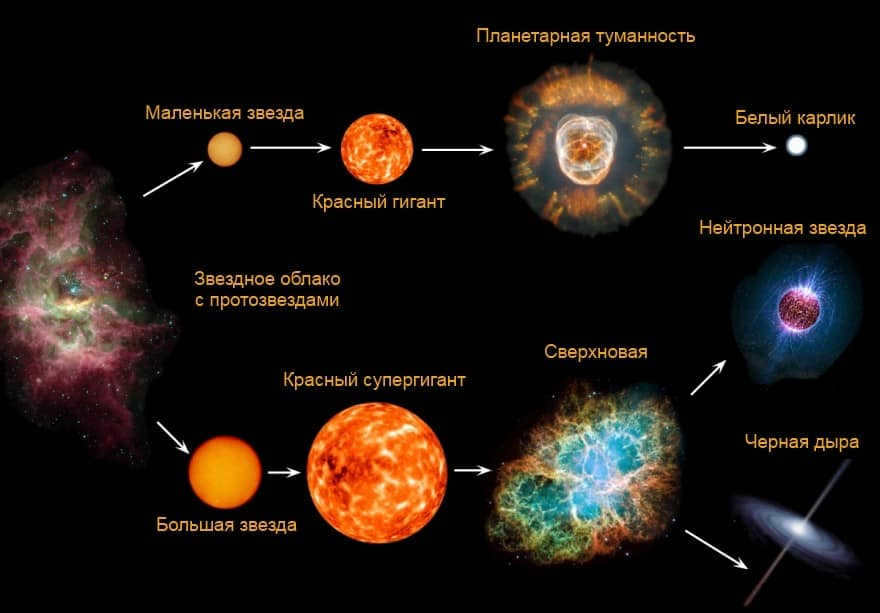
Once all the hydrogen has transformed into helium, gravitational forces compress the matter towards the core, initiating a rapid heating process. The outer layers expand and undergo cooling, leading the star to transform into a red giant. Subsequently, fusion of helium begins. As helium depletes, the core contracts and intensifies in temperature, causing the shell to expand. Upon reaching its maximum temperature, the outer layers deflate, leaving behind a white dwarf composed of carbon and oxygen, which can reach temperatures as high as 100,000 °C. With no more fuel available, the white dwarf gradually cools down. Over billions of years, these stars eventually transition into black dwarfs, marking the end of their lifespan.
When the mass of a star reaches 1.4 times that of our Sun, the electron pressure becomes insufficient to prevent the collapse of the star’s core. This event gives rise to the formation of a supernova. During the collapse, the temperature soars to an astonishing 10 billion degrees Celsius, causing the iron within the star to be crushed into neutrons and neutrinos. Within a mere second, the core is compressed to a minuscule width of 10 kilometers before detonating in a Type II supernova.
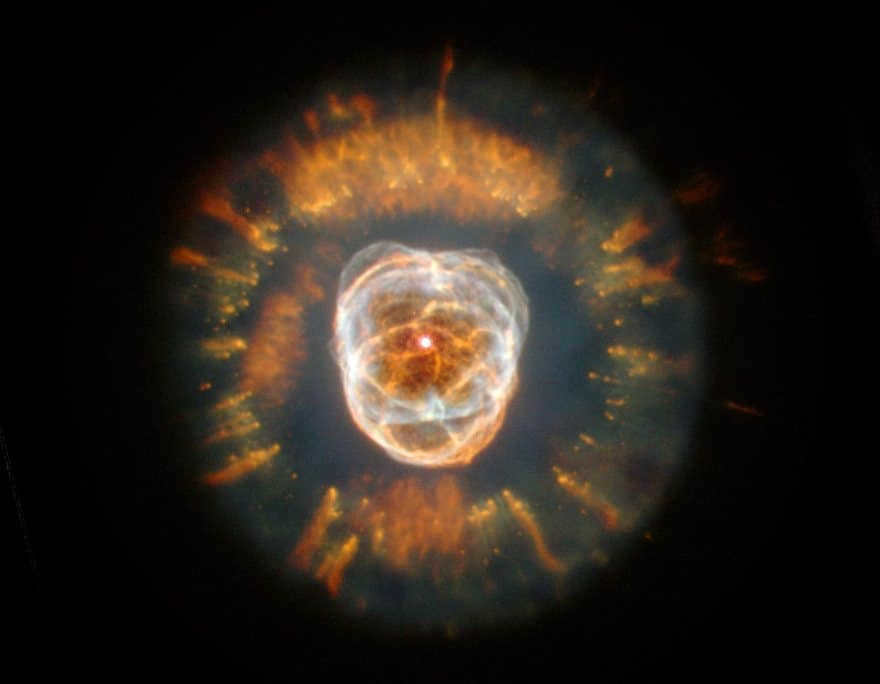

The Eskimo Nebula marks the culmination of a small star’s evolution
In the event that the remaining core of the star weighs less than 3 solar masses, it will undergo a transformation into a neutron star, composed primarily of neutrons. If the neutron star rotates and emits radio waves, it is classified as a pulsar. However, if the core weighs more than 3 solar masses, nothing can prevent its collapse into a black hole.
A low-mass star depletes its fuel reserves at such a leisurely pace that it will not transition into a main-sequence star for another 100 billion to 1 trillion years. However, considering that the universe is a mere 13.7 billion years old, it becomes evident that these stars have not yet reached the end of their lifespans. Researchers have discovered that these red dwarfs are fated to only merge with hydrogen, ruling out any possibility of them evolving into red giants. In the end, their destiny lies in cooling down and metamorphosing into black dwarfs.
Binary stars
In our familiar system, we are accustomed to the illumination provided by a solitary star. However, there exist other systems in which two stars in the celestial sphere revolve around one another. To be more precise, only one-third of stars resembling the Sun are situated in isolation, while the remaining two-thirds are binary stars. As an illustration, Proxima Centauri is a component of a multiple system encompassing Alpha Centauri A and B. Roughly 30% of the stars within the Milky Way are multiple stars.
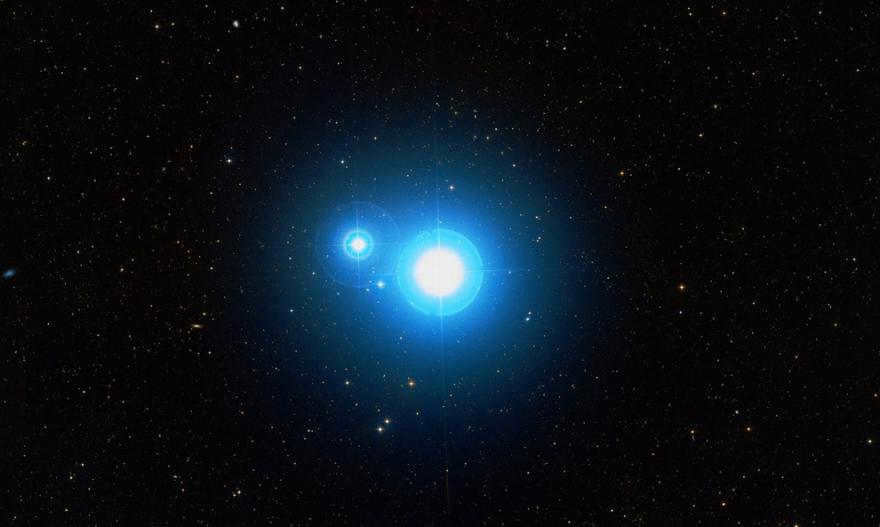
A binary star system can be formed when two protostars develop in close proximity to each other. In this scenario, one of the protostars will eventually become more massive and start to exert a gravitational influence on the other. This gravitational interaction can lead to a transfer of mass between the two stars. If one of the stars in the binary system is a giant star and the other is a neutron star or a black hole, we can expect the system to emit X-rays due to the incredibly high temperatures reached – up to 555500 degrees Celsius. Additionally, if a white dwarf is present in the system, the gas from its companion star can accumulate and erupt as a nova. In some cases, the gas from the white dwarf can accumulate to such an extent that it undergoes a rapid merger, resulting in a Type I supernova. These supernovae can be so bright that they outshine the entire galaxy for several months.
Magnitude and luminosity are terms used to describe the level of brightness exhibited by celestial bodies in the night sky. The concept of magnitude can be traced back to the work of Hipparchus in 125 B.C., who classified star groups according to their apparent brightness. The brightest stars were assigned a magnitude of one, while the faintest stars were assigned a magnitude of six. However, it is important to note that the distance between Earth and a star can affect its apparent brightness. To account for this, astronomers also use a measure known as absolute magnitude, which represents the actual brightness of a star if it were located 32.6 light-years away from Earth. The modern magnitude scale extends beyond six in both directions, with the brightest stars having negative magnitudes (such as Sirius, which has an apparent magnitude of -1.46). Below, you will find a compilation of the most luminous stars in the night sky as seen from an observer on Earth.
Compilation of the most brilliant stars observable from our planet
| 0 | Sol | 0.0000158 | −26.72 | 4.8 | G2V | |
| 1 | Sirius (Alpha Canis Majoris) | 8.6 | −1.46 | 1.4 | A1Vm | Southern |
| 2 | Canopus (Alpha Carinae) | 310 | −0.72 | −5.53 | A9II | South |
| 3 | Alpha Centauri (Toliman) | 4.3 | −0.27 | 4.06 | G2V+K1V | South |
| 4 | Arcturus (Alpha Bootis) | 34 | −0.04 | −0.3 | K1.5IIIp | North |
| 5 | Vega (Alpha Lyrae) | 25 | 0.03 (permanent) | 0.6 | A0Va | North |
| 6 | Capella (Alpha Aurigae) | 41 | 0.08 | −0.5 | G6III + G2III | North |
| 7 | Rigel (Beta Orionis) | ~870 | 0.12 (permanent) | −7 [3] | B8Iae | South |
| 8 | Procyon (Alpha Canis Minoris) | 11.4 | 0.38 | 2.6 | F5IV-V | Northern |
| 9 | Achernar (Alpha Eridani) | 69 | 0.46 | −1.3 | B3Vnp | South |
| 10 | Betelgeuse (Alpha Orionis) | ~530 | 0.50 (permanent) | −5.14 | M2Iab | North |
| 11 | Hadar (Beta Centauri) | ~400 | 0.61 (permanent) | −4.4 | B1III | South |
| 12 | Altair (Alpha Aquilae) | 16 | 0.77 | 2.3 | A7Vn | Northern |
| 13 | Acrux (Alpha Crucis) | ~330 | 0.79 | −4.6 | B0.5Iv + B1Vn | South |
| 14 | Aldebaran (Alpha Tauri) | 60 | 0.85 (removable) | −0.3 | K5III | North |
| 15 | Antares (Alpha Scorpii) | ~610 | 0.96 (permanent) | −5.2 | M1.5Iab | South |
| 16 | Spica (Alpha Virginis) | 250 | 0.98 (permanent) | −3.2 | B1V | Southern |
| 17 | Pollux (Beta Geminorum) | 40 | 1.14 | 0.7 | K0IIIb | Northern |
| 18 | Fomalhaut (Alpha Piscis Austrini) | 22 | 1.16 | 2.0 | A3Va | South |
| 19 | Becrux, Mimosa (Beta Crucis) | ~290 | 1.25 (permanent) | −4.7 | B0.5III | Southern |
| 20 | Deneb (Alpha Cygni) | ~1550 | 1.25 | −7.2 | A2Ia | Northern |
| 21 | Regulus (Alpha Leonis) | 69 | 1.35 | −0.3 | B7Vn | Northern |
| 22 | Adhara (Epsilon Canis Majoris) | ~400 | 1.50 | −4.8 | B2II | South |
| 23 | Castor (Alpha Geminorum) | 49 | 1.57 | 0.5 | A1V + A2V | Northern |
| 24 | Gacrux (Gamma Crucis) | 120 | 1.63 (permanent) | −1.2 | M3.5III | South |
| 25 | Shaula (Lambda Scorpii) | 330 | 1.63 (permanent) | −3.5 | B1.5IV | South |
Other stars that are known:
The emission rate of energy from a star is what determines its luminosity. To compare this to the brightness of the sun, measurements are made. For instance, Alpha Centauri A is 1.3 times brighter than the Sun. To make these calculations on an absolute scale, it is important to understand that 5 on the absolute scale is equivalent to 100 on the luminosity scale. The brightness of a star is determined by its temperature and size.
You may have observed that stars have different colors, which is actually influenced by their surface temperature.

Each star possesses a unique hue but emits a wide range of radiation, encompassing all types of wavelengths. Different elements and compounds have the ability to absorb and emit various colors or wavelengths of light. By examining the stellar spectrum, it is possible to gain insights into the composition of a star.
The temperature of celestial bodies in the stars is measured in kelvins, with absolute zero being -273.15 °C. The temperature of a star can be determined by its color, with a dark red star having a temperature of 2500K, a bright red star measuring 3500K, a yellow star reaching 5500K, and a blue star falling within the range of 10000K to 50000K. The temperature of a star is influenced by factors such as its mass, brightness, and color.
The size of stellar cosmic objects is determined by comparing them to the radius of the Sun. Alpha Centauri A has a radius that is 1.05 times that of the Sun. Stellar sizes can vary greatly. For instance, neutron stars are only 20 kilometers in diameter, while supergiants can be 1000 times larger than the Sun. The size of a star has a direct impact on its brightness, as luminosity is proportional to the square of the radius. The images below provide a visual comparison of the sizes of stars in the Universe, and also include a comparison with the sizes of planets in our solar system.
Comparison of star sizes

Similarly to the Sun, the sizes of stars are also calculated based on their solar parameters. Alpha Centauri A, for example, has a mass equivalent to 1.08 times that of the Sun. However, stars with the same mass may not necessarily have the same size. This is because the mass of a star also affects its temperature.
In addition to their sizes, stars also generate magnetic fields. Scientists have discovered that the Sun’s magnetic field can become highly concentrated in certain areas, resulting in the formation of sunspots or the release of coronal mass ejections. The strength of a star’s magnetic field is influenced by its rotational speed, increasing with acceleration and decreasing with deceleration.
Metallicity is the measurement of heavy elements (elements heavier than helium) in stars. There are three distinct stellar generations based on metallicity. The oldest generation (III) is still elusive to scientists, as they have not yet discovered a star completely devoid of metals. These stars were the first to release heavy elements into space upon their death, leading to the formation of the second generation of stars. It was the death of this second generation that ultimately gave rise to the birth of the first generation, which includes our Sun.
Stars Classification
The classification of stars is primarily based on their spectrum in the Morgan-Keenan system, which identifies 8 spectral classes. Each class corresponds to a specific range of surface temperatures: O, B, A, F, G, K, M, and L (arranged from hottest to coldest). Furthermore, each spectral class is further divided into 10 subtypes, denoted by numbers ranging from 0 to 9.

This system also considers luminosity. The biggest and brightest stars are assigned the smallest Roman numerals: Ia – bright supergiant, Ib – supergiant, II – bright giant, III – giant; IV – subgiant, and V – main sequence or dwarf.
The Composition of Stars in the Universe
During the majority of its lifespan, a star typically exists in the main-sequence phase. This phase is characterized by several distinct regions, including the core, areas of radiation and convection, a photosphere, a chromosphere, and a corona. The core of the star is where nuclear fusion takes place, providing the necessary fuel for the star’s energy. The energy produced by these fusion reactions is then transported from the radiative zone to the outer layers. In the convective zone, energy is transported through the burning of gases. If a star is more massive than the Sun, it will have a convective core and radiative outer layers. Conversely, if a star is less massive, it will have a radiative core and convective outer layers. Stars with intermediate masses, specifically those of spectral type A, are capable of radiating throughout their entire structure.
Following the photosphere, which is often referred to as the surface, comes the chromosphere, giving off a reddish hue due to the presence of hydrogen. Surrounding the star is the corona, a blazingly hot outer layer that may be a result of convection in the outer regions. The video below illustrates the motion of stars in the sky.
- Fascinating tidbits about stars;
- How long does it take to travel to the nearest star?;
- What exactly are stars?;
- Stars and Planets;
- The Hertzsprung-Russell diagram;
- The birth of stars;
- Where are stars born?;
- How does a star form?
- What is the process of stellar death?;
- The life cycle of a star;
- The life of a star;
- What was the initial state of the first star?
- Stellar evolution;
- Do stars exhibit motion?;
- Gravitational redshift;
- Stellar parallax;
- Binary star ;
- Wolf-Rayet stars ;
- Stars in the Orion Belt ;
- Main-sequence stars;
- Carbon stars ;
- Variable stars ;
- Supernova stars ;
- Brown dwarfs;
- Magnetars ;
- Cepheids;
- Meteors ;

Galaxy
Gaze up at the night sky, what do you observe? There exist countless stars shimmering in the heavens, resembling a scattered array of priceless jewels. Each of us has pondered the sheer quantity of stars in the sky and whether they can be quantified. Stars encompass planets, nebulae, quasars, pulsars, solar-like systems, and their vast numbers are beyond human comprehension.
To precisely tally the quantity of stars is nearly unattainable. Hence, scientists work with the quantity that is observable within the visible Universe. One thing is for certain: stars are not merely millions, but billions and trillions, and only those that can be discerned through a formidable telescope or with the unaided eye, despite the fact that individuals since ancient times have attempted various methods to keep track of them.
What methods were used to count the stars in ancient times?

In ancient Greece, astronomers attempted to enumerate the multitude of stars embellishing the heavens. Hipparchus, an ancient Greek astronomer who lived over two and a half millennia ago, not only tallied the stars but also created a register for them, bestowing upon them their individual designations. He diligently observed the night sky each year, documenting the coordinates of new luminaries that suddenly appeared. He dubbed these occurrences as stellar births. He persevered in his work for numerous years, ultimately amassing a trove of information on over 1000 celestial entities. Undoubtedly, his efforts made a monumental impact on the advancement of contemporary astronomy.
Aristotle also observed the stars and took note of their positions in the sky. The ancient astronomers were essentially working in the dark, unaware that a star’s twinkle is not a sign of its birth but rather the end of its life cycle. In reality, what we see is the light of a star that died millions of years ago.
In his catalog, Hipparchus included 15 stars of the highest brightness, 45 stars of the second highest, 208 stars of the third highest, 217 stars of the fifth highest, and 49 stars of the sixth highest magnitude. He was the first to propose that many stars twinkle unevenly due to their great distance from Earth.
What is the maximum number of stars visible to the naked eye?
The human eye has remained unchanged since ancient times, and our ability to see stars is the same as that of the ancient Greek astronomers. Without the aid of telescopes or other devices, the naked eye can see stars up to a magnitude of about +7. However, this number can vary depending on factors such as visual acuity, time of day, and sky brightness. In general, it is estimated that a person can see approximately six thousand stars in the night sky.
However, when considering factors such as light pollution from cities and the topography of the Earth’s landscape, the actual number of stars visible to the naked eye is reduced to about two and a half thousand.
If you want to increase the number of stars you can count in the sky, it is recommended to equip yourself with special gear, and the simplest and most effective tool for this purpose would be a telescope. With the help of a high-quality telescope, you will be able to observe approximately 200,000 shimmering celestial objects in the night sky. Quite impressive, isn’t it?
However, if you have access to a powerful telescope, such as those used in scientific observatories, you can see even more stars in the sky – around 6-10 times more, to be precise. This means that an average person, using a powerful telescope, can explore objects that are located approximately 47.7 billion light years away. It’s important to note that not all of these objects will be clearly visible, as our solar system is situated about halfway through the Milky Way galaxy, and many of them may be obscured by the galactic center.
In summarizing the findings, according to the most recent update from the Hubble telescope, our Milky Way galaxy is estimated to contain approximately 100 to 400 billion unique stars. It is worth noting that our galaxy is considered to be of average size and star count by contemporary astronomers. There exist significantly larger entities in the cosmos, one example being the galaxy known as the Magellanic Clouds.
How many stars are there in our solar system?
When gazing at the captivating night sky filled with stars, many individuals often ponder about the quantity of stars within our solar system. Some may speculate that there are millions or even billions, but in reality, there is only one star present, which is the Sun. The Sun came into existence approximately 4.5 billion years ago due to the accumulation of cosmic gas in a specific location. Each accumulation experienced varying gravitational forces until a star emerged, with its internal energy acting as a counterforce to these gravitational forces.
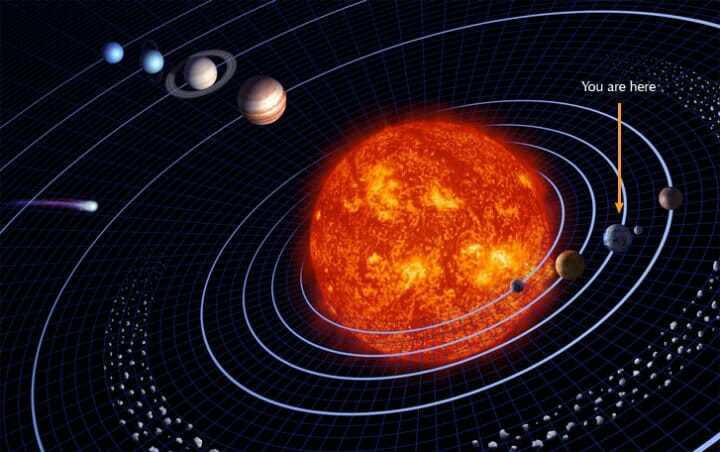
Here’s an interesting fact: Although each star may have slight variations in appearance and be classified differently, they all have the same composition. This means that they all formed from cold molecular hydrogen, which was influenced by gravity.
The Sun is considered to be a relatively young star. Its immense mass allows it to attract less massive objects and cause them to orbit around it. The light emitted by the Sun takes only 8 minutes and 20 seconds to reach Earth.
What is the total number of stars in our galaxy?
The galaxy that encompasses our solar system and many others is known as the Milky Way. It is classified as a spiral galaxy with a central bulge. The Milky Way has a diameter of about 30,000 parsecs, which equals 100,000 light-years. In more relatable terms, this translates to a staggering 1 quintillion kilometers. The Milky Way is also approximately 1,000 light-years thick.
Fascinating fact: Numerous stars have a preference for companionship, existing as double stars with a shared center of gravity. It is worth noting that there are even groups in the universe where there are 3-4 stars for every one center of gravity. However, our Sun is a solitary star. Just imagine how captivating it would be to witness the sunrise alongside 2-3 celestial luminaries.
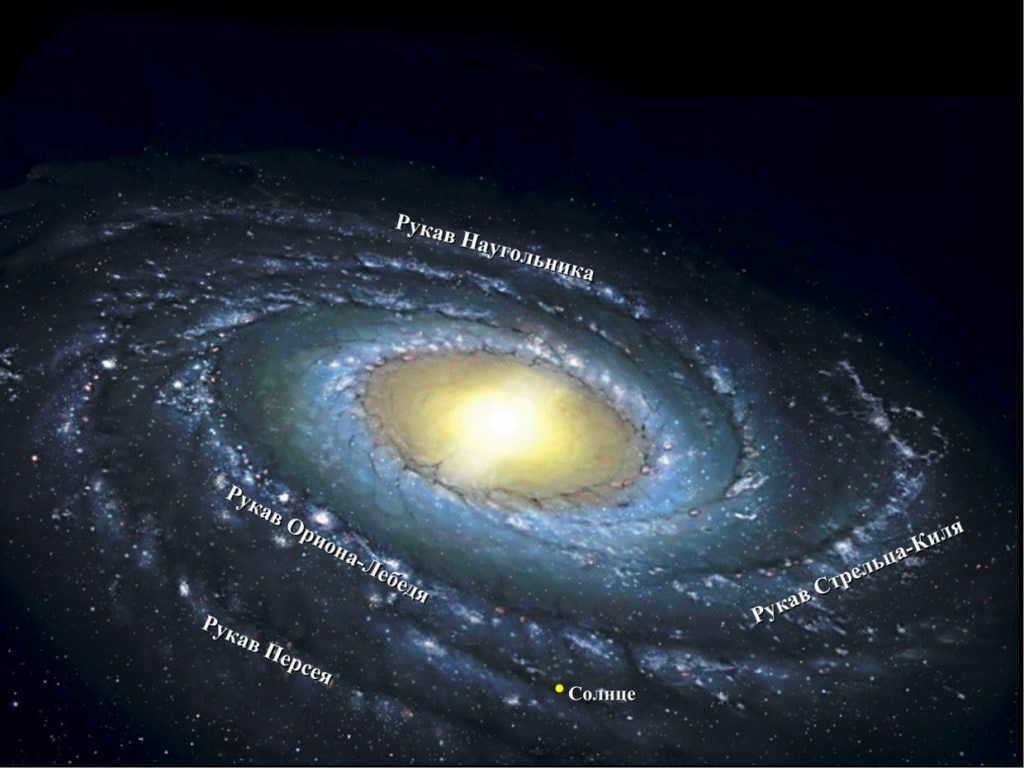
Based on the most recent calculations, the number of stars in our galaxy is estimated to be between 200 and 400 billion. The majority of these stars are arranged in a manner that gives the galaxy the appearance of a flat disk when viewed from a distance. Additionally, the Milky Way is home to an estimated 25-100 billion brown dwarfs.
Did you know? The constellation known as the Big Dipper is comprised of a specific number of stars, each with their own names and legends attached to them. If you’re curious about the appearance of the Big Dipper, you can find a visual representation in the form of a diagram, photograph, or video.
When looking at the night sky in the northern region, the naked eye can detect only about 3,000 stars. However, with the invention of telescopes, people were able to observe more objects in the vastness of the Universe. As more advanced astronomical equipment was developed, astronomers realized that there are not just individual stars to be counted, but entire galaxies, each containing an estimated minimum of 100 billion stars.
It’s a fascinating fact that to calculate the number of stars visible to humans in the Universe, one would need to add 11 additional zeros to the number 125,000,000,000,000.
Furthermore, it is important to note that galaxies vary in the number of stars they contain. For instance, our own galaxy, the Milky Way, is a typical spiral galaxy with approximately 200 billion stars. In contrast, the neighboring Andromeda galaxy is much larger and already boasts a staggering 1 trillion stars.
It is a natural occurrence that scientific and technological advancements continue to evolve, however, at present, humanity has yet to make significant breakthroughs in this field. Our current technology only allows us to explore the cosmos to a certain extent. It is plausible that in the future, perhaps in a few centuries, mankind will uncover fresh approaches to studying and conquering the vastness of the Universe.
Interesting video: The number of stars in the sky
If you happen to come across any mistakes, kindly select the specific text and hit Ctrl+Enter.

It is unimaginable to fathom the vast number of stars in the Universe. No matter how developed our imagination may be, it is impossible to grasp the complete organization of our Universe.
Furthermore, attempting to count only the stars visible to the naked eye would prove fruitless. The sheer number of sparkling objects is overwhelming and one would quickly lose track.
Additionally, it is important to remember that only a portion of the celestial sphere is visible from any given point on the globe. To accurately count the stars, one must travel to the other hemisphere.
However, it is still impossible to visually count the luminaries if one manages to observe from both sides of the Earth. Not all luminous points in the night sky are stars, and by the time you finish counting, the morning will arrive and they will vanish from view.
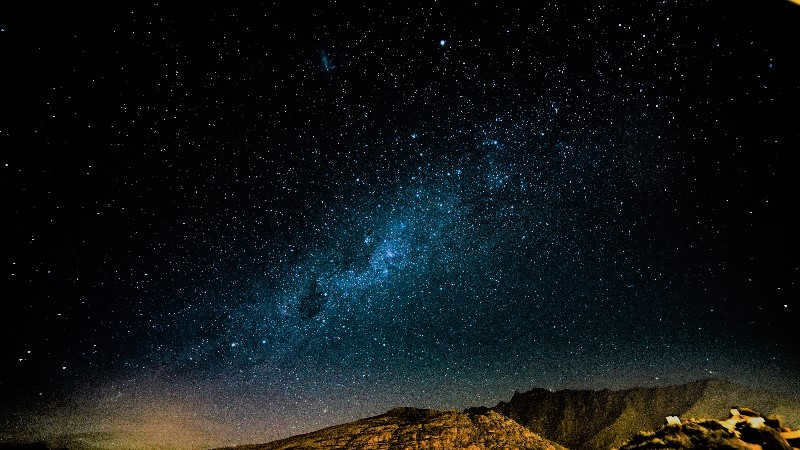
Space technologies are highly advanced in the modern world and continue to be developed and improved. However, even with the latest advancements, it is still impossible to accurately calculate the number of stars in the sky. Despite the tremendous amount of data collected by instruments like the renowned Hubble telescope, scientists have not been able to solve the mystery of the universe’s star count.
While it may be theoretically possible to attempt such calculations, it is best to approach the task step by step.
Although we cannot currently travel to the stars, we can get a little closer to them with the help of trampolines equipped with protective nets. Our diverse range of trampolines offers options suitable for everyone’s needs.
Which celestial body is a star
A star is a massive gaseous celestial body in which thermonuclear reactions have occurred or will occur.
Often, people confuse stars with planets. So, let’s examine the definition of a planet. It is a celestial body that orbits a star. Importantly, planets do not undergo thermonuclear reactions, and their light is a result of reflecting stellar radiation.
All celestial bodies move across the sky, relative to our planet, of course. But how do stars specifically move across the celestial sphere? You can learn more about it here.
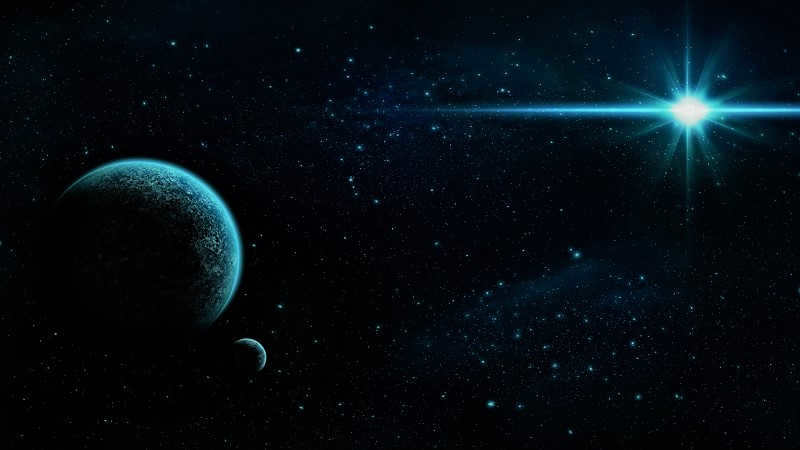
Stars known as guides in the Universe
It is worth noting that not all celestial bodies are referred to by this name, but only the Cepheids. These stars emit an intense radiation that is thousands of times more powerful than that of the sun.
Cepheids are a distinct group of stars with high luminosity. Additionally, they are pulsating variables and supergiant luminaries.
Extensive research has been conducted on the relationship between the period and luminosity of Cepheids, making them suitable as standard candles. In other words, they can be used to measure distances to cosmic objects, even those that are extremely far away. For instance, astronomers utilize Cepheids to calculate the distance to other galaxies.
Indeed, that is the reason why the Cepheids are referred to as the guides of the cosmos.
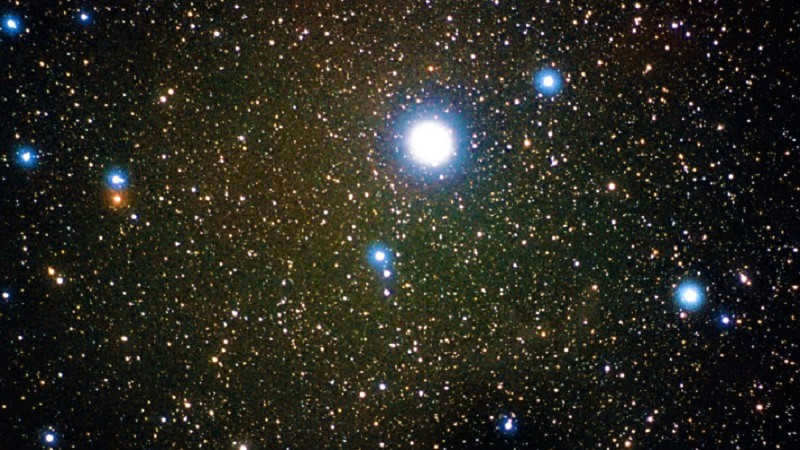
What is the number of stars in our solar system?
I find this question quite thought-provoking, as it is more of a logical query. Undoubtedly, there is only a single star. The Sun serves as our primary and sole star within the Solar System.
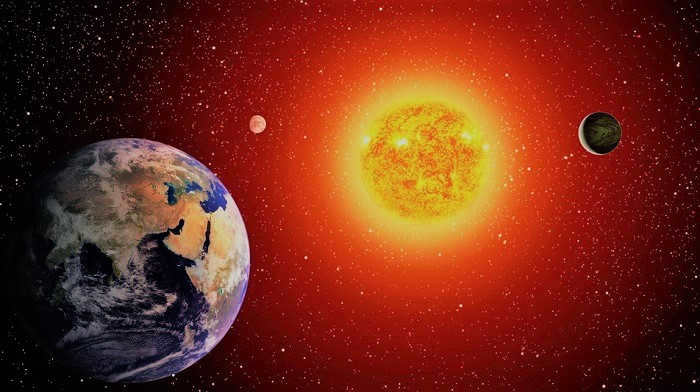
What is the count of stars in our galaxy?
As you may be aware, our home planet, Earth, is situated within the Milky Way galaxy. According to the estimations provided by astronomers, this galaxy contains anywhere between 200 to 400 billion celestial bodies. These stars differ from one another in terms of their physical properties, characteristics, age, and distance from us.
However, it’s important to note that the exact number of stars in the Milky Way is still a matter of speculation. The exploration and research of our galaxy are ongoing, and new discoveries are being made.
Nevertheless, there are certain stars that are familiar to us. These are primarily the celestial bodies that are visible from Earth’s surface or those that are relatively close to us. In the field of astronomy, there is even a standardized catalog of stars.
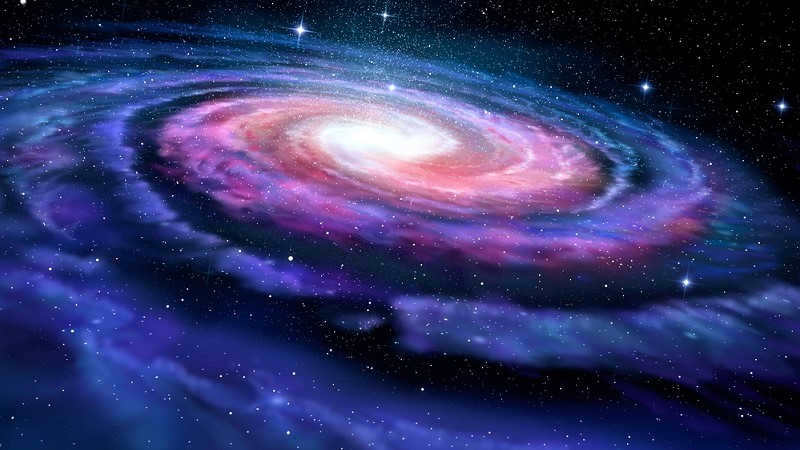
The Number of Stars in the Universe
It is important to remember that the Milky Way is not the sole system of its kind. This leads to the question of how many galactic clusters exist in the vastness of the cosmos? The truth is, there is no definitive answer. It is possible that our Universe is truly boundless. This would imply the capacity for an infinite number of galaxies and, consequently, stars.
According to current theories, there exists a visible segment of the Universe. This is also known as the observable region, or Metagalaxy. It refers to the portion that can be seen from Earth or studied through the use of spacecraft and telescopes.
Based on recent data, the observable universe contains a wide range of galactic systems, the precise quantity of which remains uncertain. According to scientific estimates, the number of these systems falls within the range of 500 billion to 2 trillion.
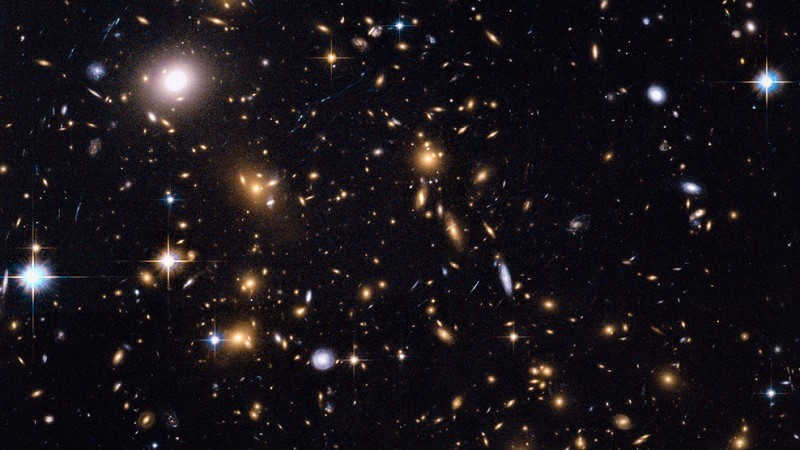
It is remarkable that the Milky Way is just an ordinary, or rather, a classical system. If there are truly 2 trillion galaxies in the observable part of space, and if each galaxy has 400 billion stellar objects, then the total number of stars would be:
2,000,000,000,000 * 400,000,000,000 = 8 x 10^23
In total, there are trillions upon trillions upon trillions of stars. From this perspective, the universe is truly boundless.
It is then difficult to fathom the sheer number of stars contained within the universe.
Thanks to the advancements in the field of astronomy, scientists have been able to discover a multitude of extraordinary stars scattered across the vast expanse of the celestial sphere. However, the exact count of these celestial anomalies remains elusive. Nevertheless, let not our spirits be dampened, for there is hope that in the forthcoming days, we shall embark on an expedition to unravel the mysteries hidden within the farthest reaches of the cosmos.

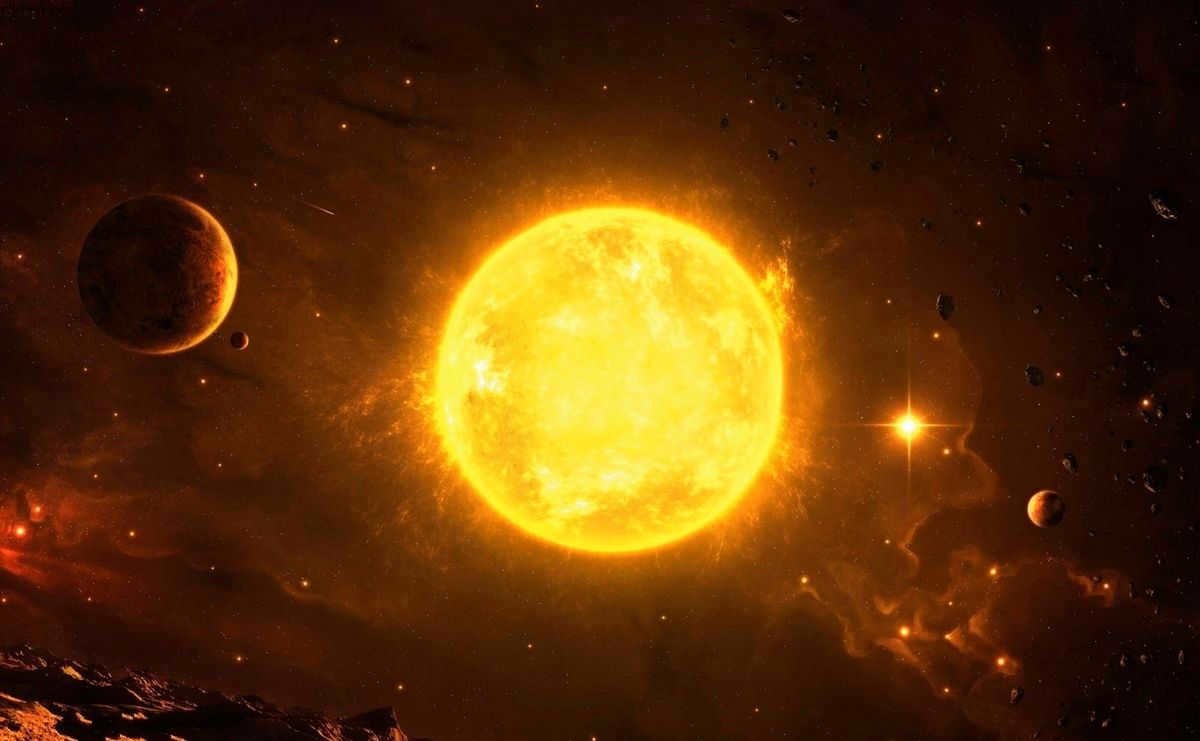
Outer Space
The sight of the twinkling night sky is absolutely captivating. It appears to be an endless source of admiration. There is so much enigma and intrigue within it. But what exactly are these celestial objects known as stars?
The Definition of Stars
Stars are expansive cosmic entities dispersed throughout the vastness of outer space. Gravity keeps certain materials contained within them. Stars possess extremely high temperatures, resulting in the emission of light that can be observed by individuals on Earth. These objects are so intensely heated that all substances, including metals, exist in a gaseous state within them, and this collective state is referred to as plasma.
The reason behind the illumination of stars
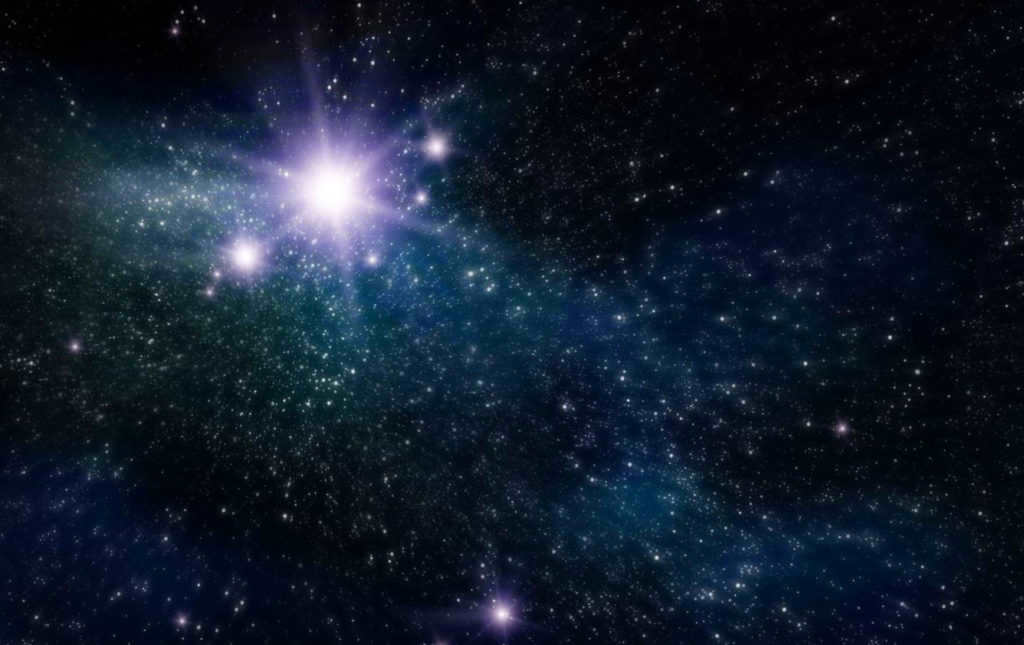

The phenomenon of star glow is related to the temperature disparity between its core and surface. Within a star, temperatures can reach over 10 million degrees. Such extreme conditions facilitate ongoing thermonuclear reactions that result in the transformation of certain chemical elements. For instance, the abundant hydrogen within most stars undergoes a process that converts it into helium within their interiors. This transformative process is responsible for the luminous appearance of stars, visible to observers on Earth.
Here’s an interesting fact: Humans can see stars from the three nearest galaxies in the night sky, namely Andromeda, the Triangle, and the Milky Way. To observe celestial objects in more remote regions of space, powerful telescopes are required.
Stars’ Names
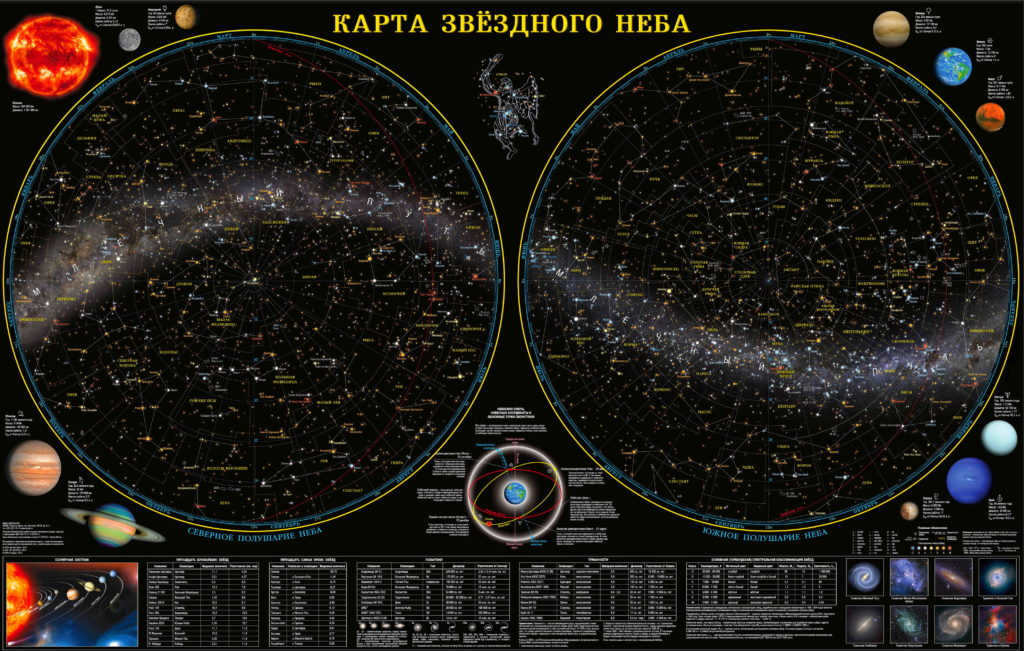
In ancient times, people started naming individual celestial bodies and constellations. Back then, humans envisioned the sky as the home of various mythical creatures, which inspired the names given to them. Many of these names are still in use today.
The names of constellations in the Northern and Southern hemispheres are remarkably distinct. In the Northern Hemisphere, the constellations are often named after mythical creatures, while in the Southern Hemisphere, they are named after various parts of ships and sea creatures. This difference can be attributed to the fact that the Southern Hemisphere was relatively unknown to ancient scientists. It was only during the era of great geographical discoveries that the Southern Hemisphere started to be actively explored. As a result, many constellations in the southern sky were first discovered by sailors, who named them according to their own preferences. This is how constellations like Kiel and Korma came to be.
Today, there are a total of 88 constellations recognized by scientists. Out of these, 12 belong to the zodiac and are particularly significant. The brightest celestial body in each of these constellations is denoted by the Greek letter “alpha,” while the next brightest is designated as “beta,” and so on.
Each star is given a unique alphanumeric designation. Furthermore, celestial objects are categorized based on their color and size. For instance, they can be classified as blue giants or brown dwarfs.
The process of star formation
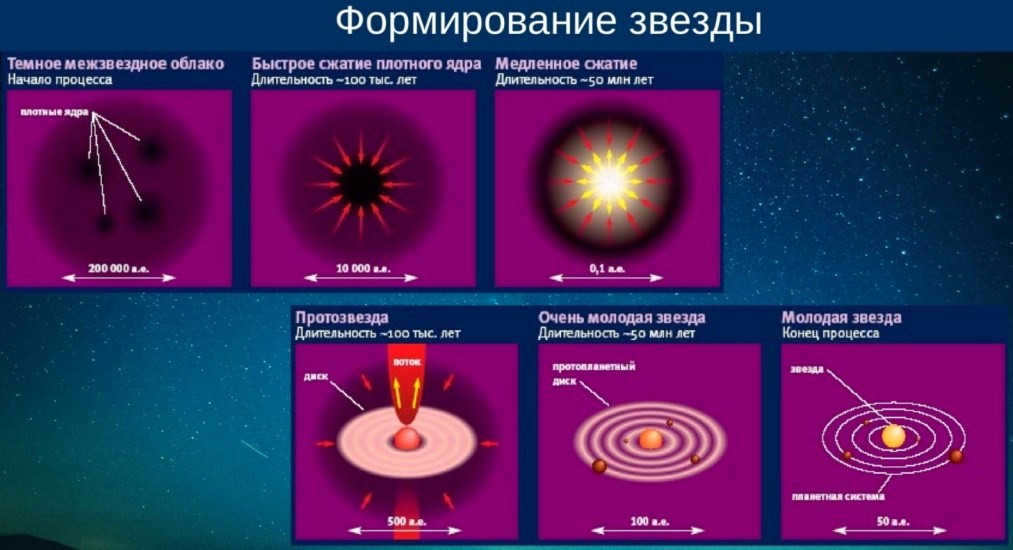
The birth of a star occurs when hydrogen and helium molecules combine within a single cloud, causing it to initiate rotation. As the cloud rotates, internal gravity emerges, further accelerating the rotation.
Gradually, the cloud’s outer space takes on a disk-like shape, while the inner space forms a spherical cluster. During this process, the temperature and density of the material increase, leading to the formation of a spherical protostar.
Over time, the pressure and heat within the protostar rise to 1 million oC, triggering the fusion of atomic nuclei and igniting the new star. However, the celestial body remains nearly invisible to the naked eye, as it is surrounded by a dense gas and dust cloud.
Over time, energy is produced as a result of nuclear fusion, converting a specific quantity of atomic mass.
Throughout this period, the star is in constant motion, influenced by various forces. Primarily, it orbits around galaxies or celestial bodies with a significant gravitational pull.
Here’s a fascinating tidbit: stars are visible in space around the clock, as there is no division between day and night.
Evolution of Stars
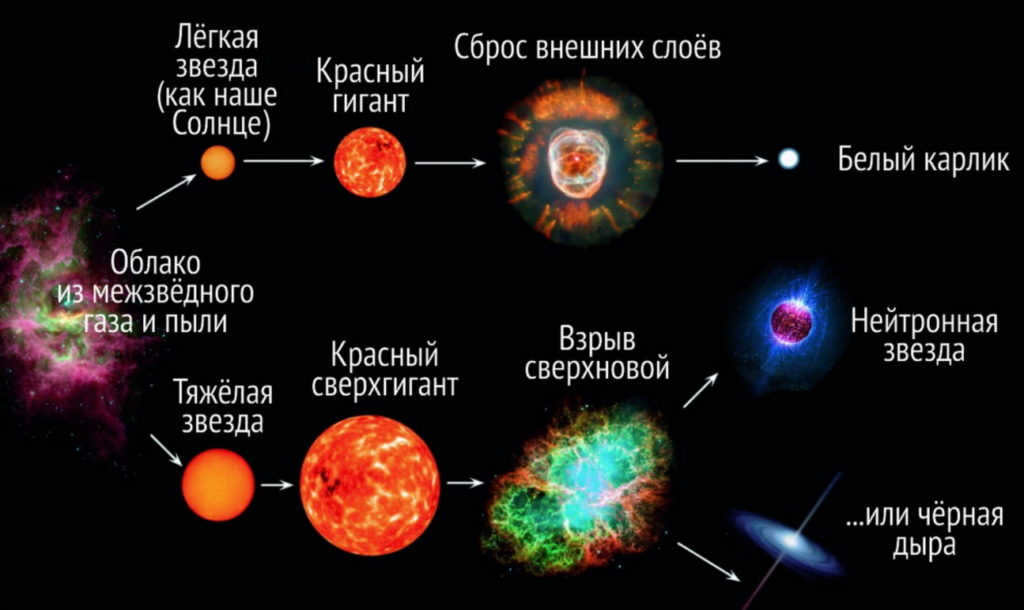
Every celestial entity goes through a specific progression known as evolution. The mass of a star greatly impacts this process, with heavier objects having shorter life cycles.
Stars with intermediate mass, approximately 1.5-8 times heavier than the Sun, originate from expansive clouds that can span up to 100000 light years. As the internal temperature reaches 3725 oC, a protostar emerges from the nebula. Once hydrogen fusion commences, the object evolves into a variable-brightness entity. Gravity’s compressing forces balance out the expansion. The star begins to derive energy from the hydrogen fusion occurring in its core. This entire formation process takes around 10 million years.
Once all the hydrogen has been converted into helium, due to the gravitational force, the matter undergoes a transformation into a core, which begins to heat up rapidly. As a result, the outer layers expand and quickly cool down due to the influence of the surrounding environment. This process leads to the creation of a red giant. Subsequently, chemical reactions involving helium take place. Once helium is completely transformed into other substances, the nucleus expands its shell as a result of the rising temperature. This gives rise to the formation of a white dwarf, which can reach temperatures as high as 100,000 degrees Celsius. Eventually, the fuel necessary for heating is depleted, causing the object to gradually cool down. After billions of years, it evolves into a black dwarf and completes its life cycle.
High-mass stars experience the fastest evolution. The entire life cycle of these stars, from formation to demise, occurs within a span of 10,000 to 100,000 years. In their early stages, these stars exhibit high temperatures, brightness, and immense size. Their appearance is characterized by a deep blue hue. Over time, they transform into red supergiants, where carbon fusion occurs, resulting in the creation of heavy elements, including an iron core that can measure up to 6,000 kilometers in width. Unfortunately, the nuclear radiation emanating from this core is no match for the force of gravity, leading to the star’s ultimate demise.
Fascinating Fact: The first known star map was created approximately 3,000 years ago.

Outer space
The cosmos is an immense expanse for researchers to investigate. Despite the fact that spaceships have been journeying through interstellar space for many years, humanity has yet to fully comprehend even a fraction of it. There are countless galaxies in the cosmos, housing billions of planets. And humans can only speculate about what lies within them. However, the existing knowledge is sufficient to form a general understanding of the Universe.
What does the Universe consist of?
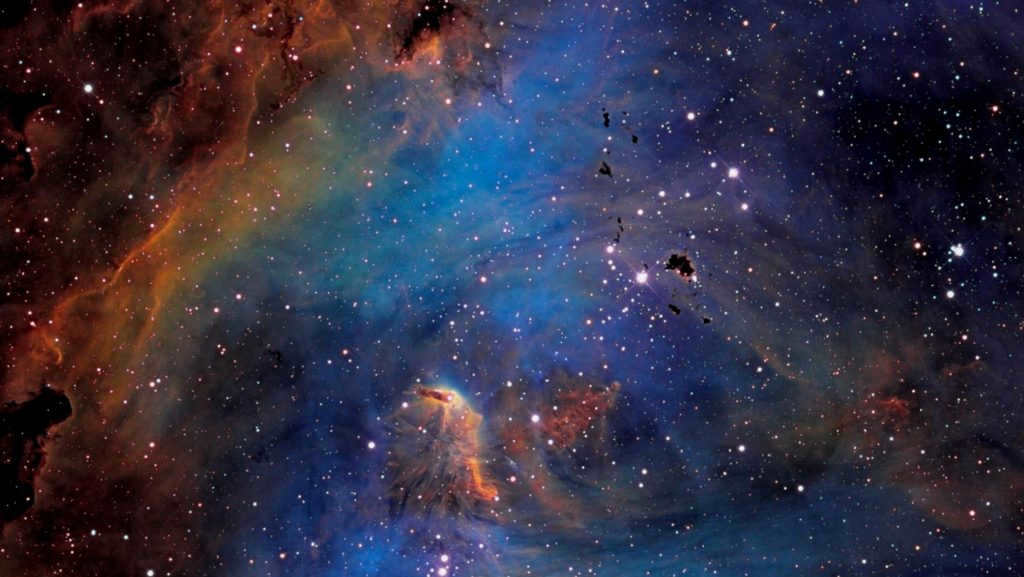
The formation of the universe, which occurred billions of years ago, remains a mystery that scientists have not been able to solve yet. It encompasses all the space that exists, including galaxies, stars, and planets.
Despite the tremendous efforts made by astronomers from various countries, a complete understanding of the universe’s structure remains elusive. Every day, new areas of space are explored, but the boundaries of the universe seem unreachable. Research is conducted in multiple directions, such as studying the solar system, neighboring galaxies, estimating the universe’s overall size, and counting celestial objects. However, even after decades of dedicated work, a comprehensive knowledge of extraterrestrial space seems unattainable.
The cosmos is in a perpetual state of flux, rendering the task of comprehending and describing specific components a complex endeavor. However, one undeniable truth remains: the expanse of the universe is so vast that it eludes our ability to fully investigate.
The composition of the cosmos
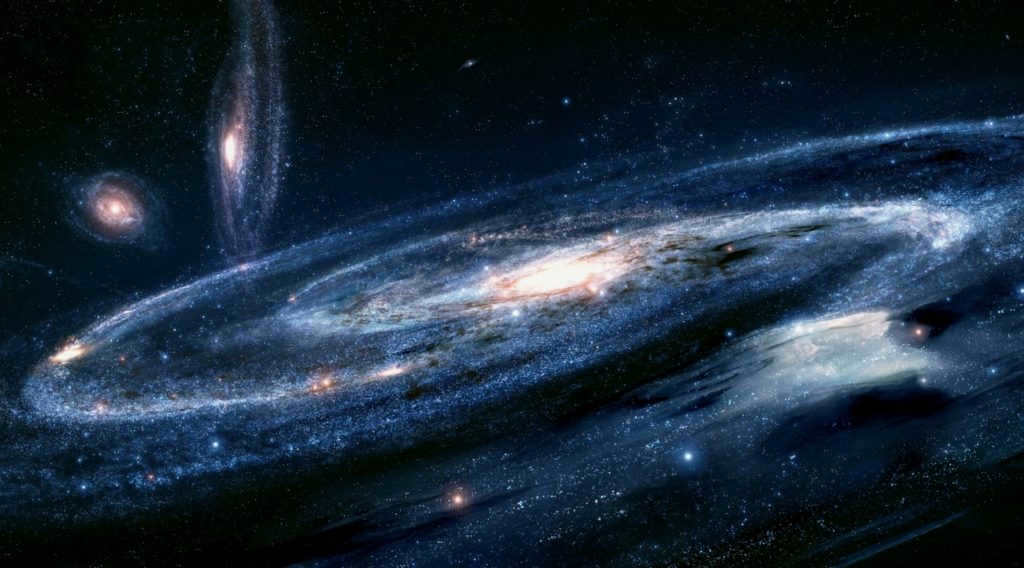
Galaxies contain the stars visible to humans, including our own Sun, which is situated at a considerable distance from other celestial bodies. When viewed from an external perspective, the Milky Way appears as a vast disk with a concentrated grouping of stars in its central region. The Universe is filled with numerous such galaxies.
Interesting to note: The Milky Way is comprised of approximately 10 billion stars, and it takes light 100,000 years to traverse from one end of the galaxy to the other.
Stars within galaxies are not uniformly dispersed, as there are dense clusters resembling spheres dispersed throughout various regions. Additionally, there are vast expanses where not a single celestial body can be found for light-years on end.
Many stars possess planets orbiting them that exhibit distinctive appearances, atmospheres, and additional characteristics. In addition, certain stars also possess satellites, which are compact celestial bodies held together by the force of gravity.

In ancient Rome, the renowned philosopher Cicero introduced the Latin term “universum” to describe the entirety of space. This word resonated with other intellectuals, who adopted it and began using it in a similar context.
The term “universum” encompassed all known entities, including the Earth, the Sun, distant stars, planets, and living beings. Over time, the Latin ending was dropped, and the word transformed into “universe” in English, retaining its meaning of “universe”.
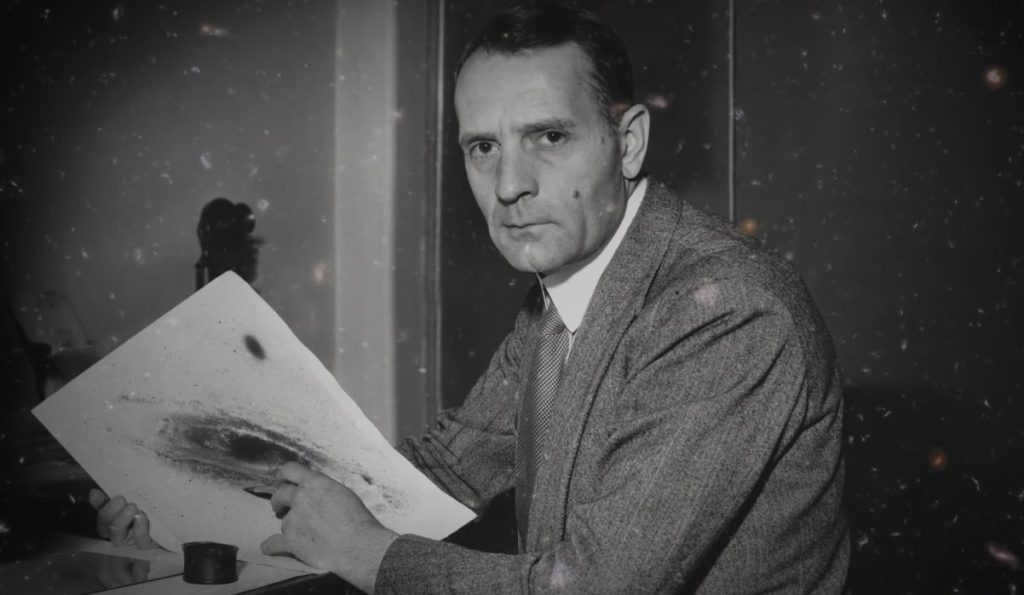

If we accept the Big Bang theory, then the countdown of the Universe’s existence commences at the precise moment when the singularity, compressed to minuscule proportions, instantaneously expanded. Over time, galaxies filled this expanse and gradually assumed the shapes that humans now observe through telescopes.
The Universe has traversed an immense journey, spanning not just millions but billions of years. The notion of its age first began to enter people’s thoughts in the 18th century. After gaining a sufficient understanding of the Earth, attention turned to the stars, and a concerted effort was made to glean as much knowledge as possible about them.
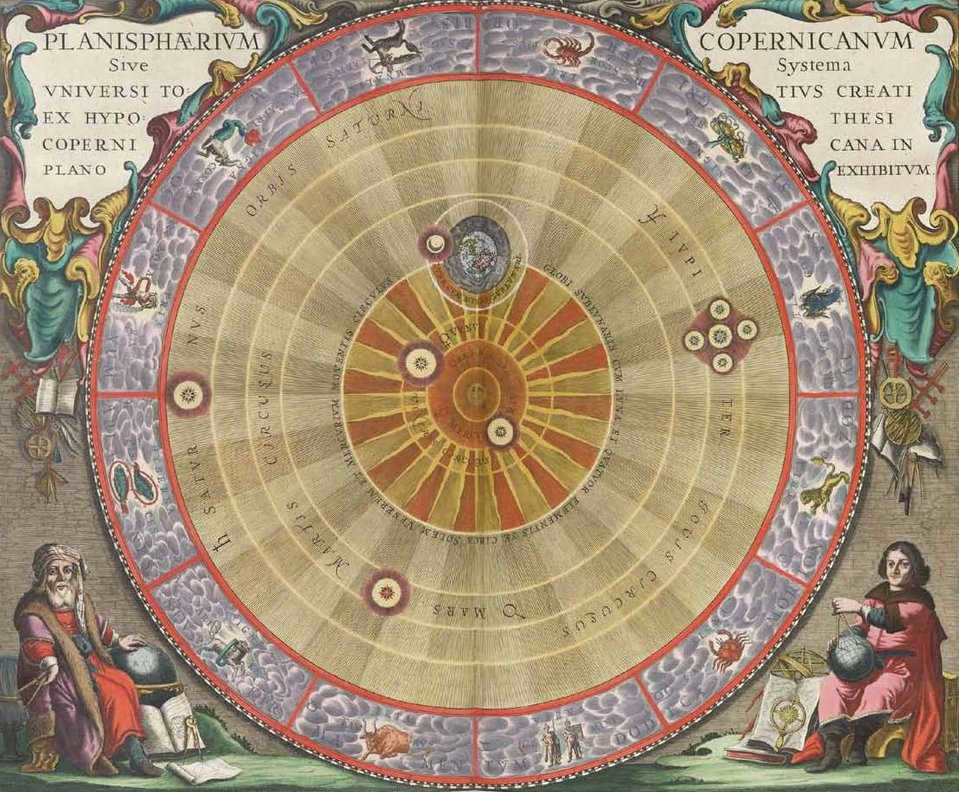
Initially, it was believed that the universe was infinite and timeless. However, the discovery of the laws of thermodynamics disproved the notion of the universe’s eternal nature. According to these laws, heat flows from hotter objects to cooler ones until a temperature equilibrium is reached. If the universe had existed forever, planets, stars, and other cosmic bodies would all have the same temperature. Based on this reasoning, scientists of that era concluded that the space surrounding us has a finite age.
Fun fact: Scientists have not ruled out the possibility of certain regions in space where objects maintain the same temperature. However, these objects would need to be composed of the same materials.
To demonstrate the age of the Universe in an alternative manner became feasible during the 20th century. The astronomer Lemeter postulated that the surrounding space is not boundless, but possesses limits and is continuously expanding. Edwin Hubble corroborated this notion as he observed the gradual movement of neighboring galaxies away from the Milky Way. By traveling back in time, one could potentially arrive at a juncture when the dimensions of the universe were at their minimum and had not yet commenced their growth. It was precisely at this instant that the universe was birthed, thereby establishing its chronological age.
What is the age of the universe?
By taking into account the expansion of space, Edwin Hubble was able to calculate a constant that represents the speed of this phenomenon. In 1958, scientist Sandidge utilized this value to make calculations and determined that the age of the universe is approximately 20 billion years.
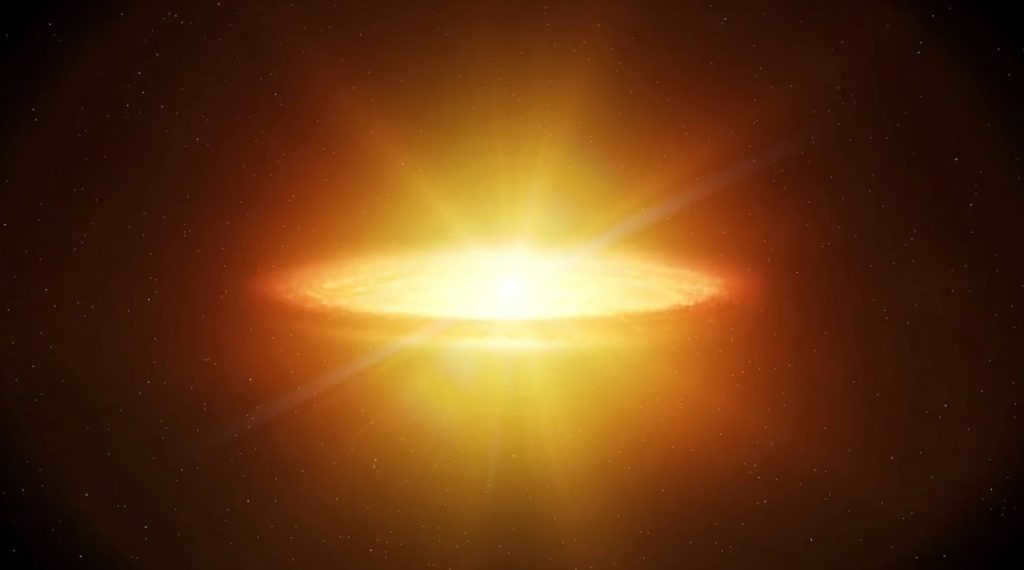
The prevailing theory regarding the origin of the universe is currently the Big Bang theory. This theory offers an explanation for the existence of various celestial objects, physical laws, matter, and everything that constitutes the cosmos.
According to this theory, the universe started from a small singularity with an incredibly high density and the absence of time. Eventually, this singularity began to expand at an exponential rate, leading to the formation of space, physical laws, gravity, and other fundamental aspects of the universe. During the initial stages, the temperature was so extreme that particle formation was impossible.
After approximately 380 thousand years, the temperature decreased to 3000K, allowing for the formation of subatomic particles, which eventually evolved into complete atoms. Over billions of years, these atoms transformed from dust clouds into stars, planets, and asteroids.
The development of the Cosmos
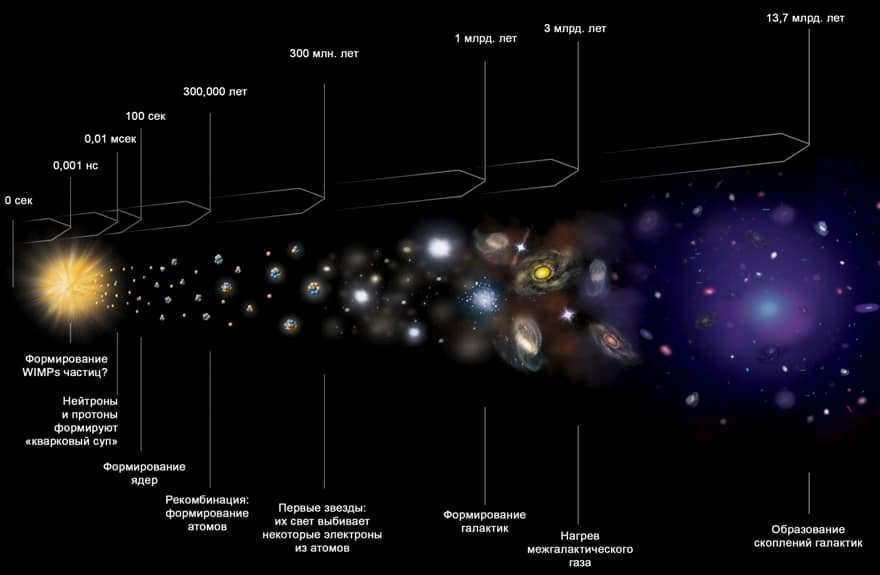
Following the passage of billions of years, the emergence of atoms and molecules in space led to their gravitational interactions and subsequent movement. This period has been designated by scientists as the Structural Epoch.
During the initial moments of expansion, the simplest particles of light character manifested in space. Approximately one year later, the advent of dark matter took place. Then, after an additional 380 thousand years of temperature decline, molecules capable of forming diverse substances emerged.
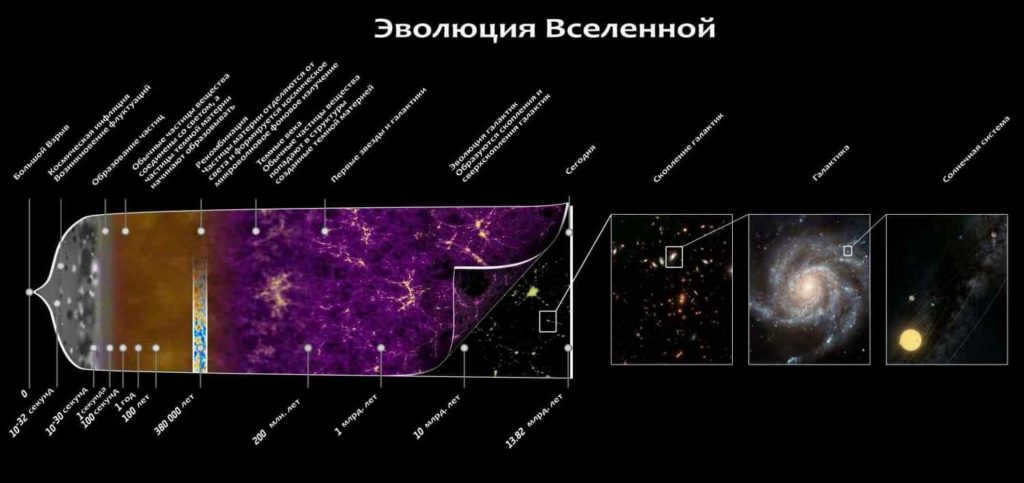
Step by step, the particles gradually condensed into immense gas clouds, and after a certain period, stars and planets began to take shape, with a mutual gravitational attraction. The initial galaxies came into existence 300 million years after the occurrence of the Big Bang. Nevertheless, it took another 10 billion years for them to acquire their current appearance.
Presently, the age of the Universe is estimated to be around 13.82 billion years, and its development is still ongoing. Scientists are certain that galaxies and the overall structure of space will undergo numerous transformations before reaching their final state.
Did you know: It is believed that the Universe will eventually compress back into a singular point of singularity, only to expand again through another Big Bang.
Proof of the ongoing evolution of the Universe lies in the existence of relic radiation. If this radiation is still visible at the edges of space, it indicates that the energy released during the Big Bang has not yet dissipated. As a result, space continues to expand.
The configuration and form of the Cosmos
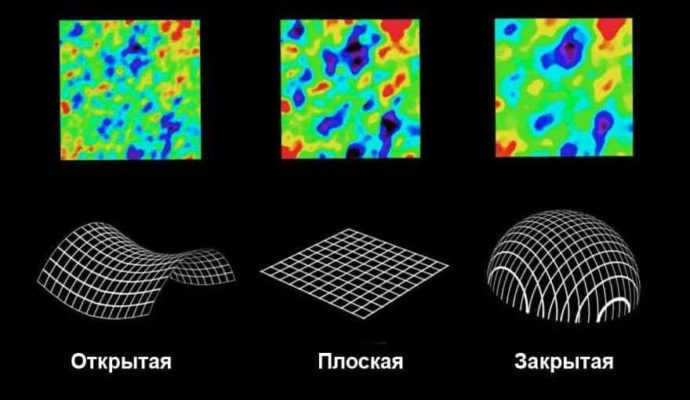
The assertion that relic radiation lies at the very periphery of the Universe is a subject of considerable debate. It has been established that space is expanding at a rate faster than the speed of light, causing the actual boundaries of space to extend beyond the regions where light energy from the Big Bang has managed to reach. Preliminary estimations suggest that the Universe is currently about 91 billion light years in magnitude, and this figure is continuously increasing.
Scientists from around the globe are striving to ascertain the precise structure of the surrounding space. While it is evident that space is composed of galaxies with voids, dust clouds, asteroid clusters, and other formations in between, the actual shape and configuration remain elusive.
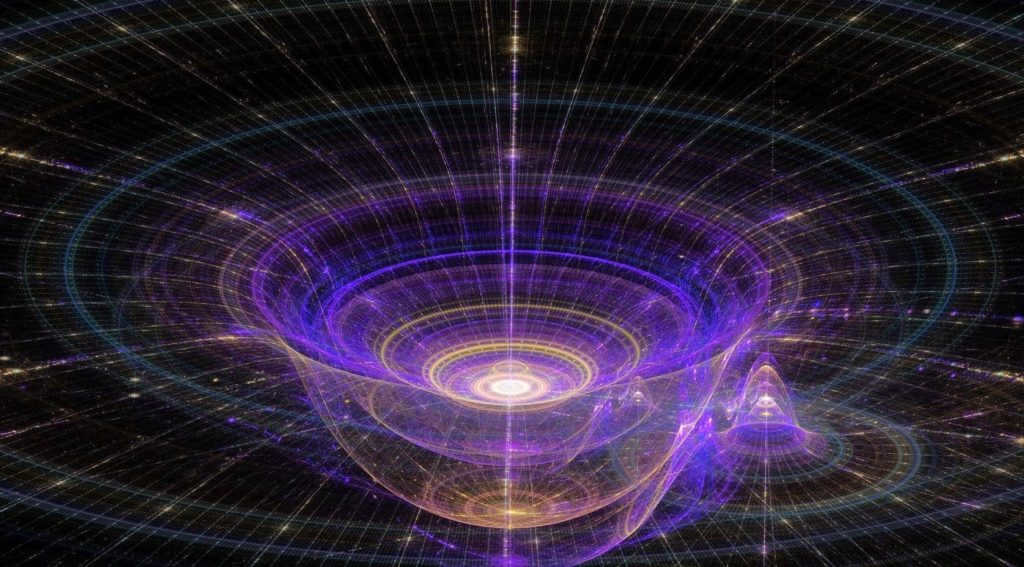
The cosmos is governed by four dimensions: XYZ coordinates and time. Based on this, scientists have formulated three possible structures that the surrounding space could adhere to:
- An open structure resembles a saddle and has no boundaries. It cannot infinitely stretch in space and must eventually come to a halt;
- A flat structure is square-shaped and can expand indefinitely;
- A closed structure is akin to a closed sphere, which cannot grow indefinitely. However, researchers speculate that this may occur after an “infinite” amount of time.
Scientists have yet to determine which universe structure is the most accurate. Nevertheless, all three possibilities allow for predictions about its shape.
The Destiny of the Cosmos
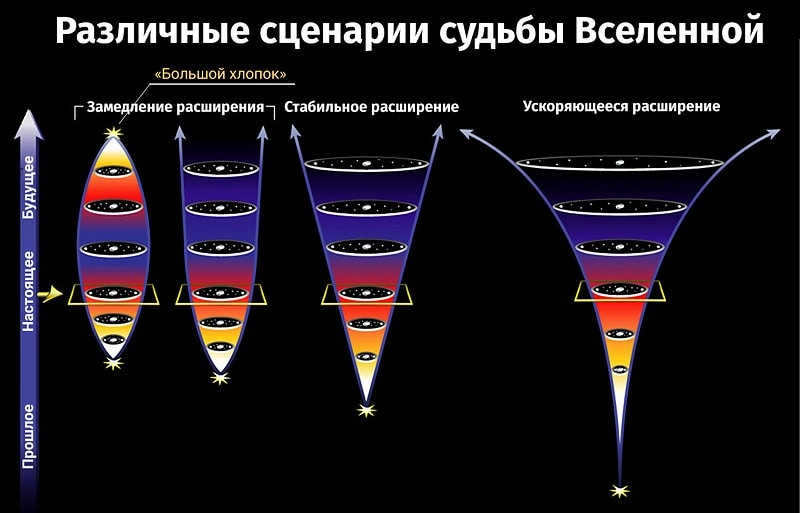
If the universe possesses an age and experienced its birth billions of years in the past, it implies that there will inevitably come a point in time when it will cease to exist. In the 1990s, researchers delving into the mysteries of the cosmos embarked on a mission to anticipate its fate and ascertain the eventual outcome of its existence.
All suppositions are grounded upon the fundamental assumption that the Big Bang theory holds true. This foundational principle provides essential information about the nature of the universe, aiding in the formulation of a comprehensive understanding of the spatial structure and enabling predictions regarding its future trajectory.
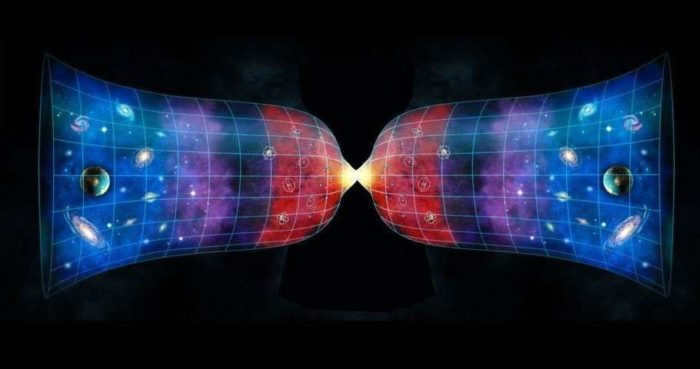
Currently, there are three hypotheses regarding the future of the universe:
- The Big Contraction. Once the space expands to a certain extent, it will initiate a contraction. This scenario is plausible if the density of space exceeds the permissible limits. Consequently, the boundaries of the Universe will gradually diminish, along with the distances between celestial objects. The process will persist until it reverts back to the minuscule singularity that existed prior to the occurrence of the Big Bang.
- The immense freeze. Unless the density surpasses the maximum density, the Universe will persist in expanding infinitely. Over time, however, it will deplete its energy and gas reserves. Neutron stars will transform into black holes, while the remaining objects, having exhausted all their heat, will become white dwarfs. Gradually, the temperature in space will decline until it reaches absolute zero.
- The Grand Schism. Despite the mutual attraction between all objects in the Universe, galaxies continue to drift apart. Scientists speculate that under certain conditions, celestial bodies in space may separate to such distances that the gravitational force becomes null.
The future of the Universe remains unknown. Since it is still in the process of formation, its ultimate end will only occur billions of years from now.
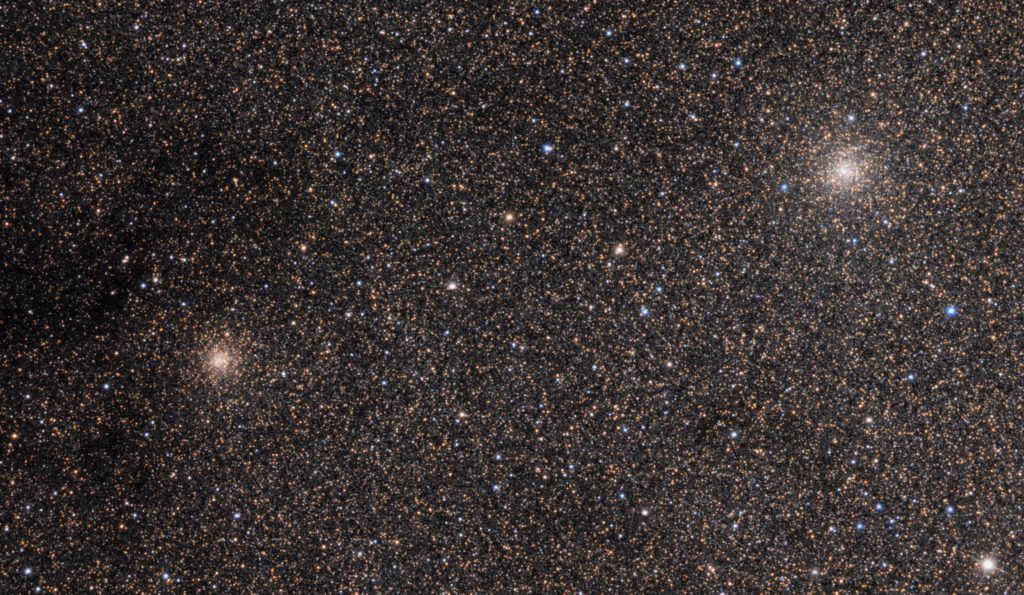
Those with an interest in outer space often ponder the question: how many stars exist in the Universe? The Universe is comprised of galaxies, each of which can contain an immense number of celestial bodies, some of which necessitate specialized equipment in order to be observed. Stars come in various forms, such as white giants and red dwarfs, and possess distinct characteristics and levels of visibility.
Fascinating tidbit: the naked eye can discern up to 9000 stars in the night sky, all of which are situated within the confines of the Milky Way.

If you utilize binoculars to observe the vast expanse of the night sky, the quantity of stars available for observation will substantially increase, reaching a staggering 200 thousand. And in the presence of a telescope with moderate power, the overall number of celestial bodies in the sky will skyrocket to a remarkable 15 million. Additionally, this remarkable device enables individuals to gaze upon distant galaxies, resembling minute specks.
It is not a challenging task to deduce that with the utilization of makeshift tools, individuals can catch a glimpse of stars that exist in relative proximity. However, the question remains: how many of them exist within the vastness of the universe?
Within the confines of the Milky Way, the abode of our solar system, approximately 400 billion stars can be found. While this figure is certainly impressive, it pales in comparison to the scale of the Universe. Spiral galaxies, for instance, house a staggering 100 trillion stars.
According to estimates, there are at least a septillion stars in the universe, which is equivalent to 10 to the 24th power. All of these stars are located within a distance of 46 billion light years from Earth, making them observable. However, there may be other galaxies beyond this distance that are hidden from human sight. As a result, the total number of stars in the Universe could easily surpass a septillion.
Is there a limit to the size of the universe?
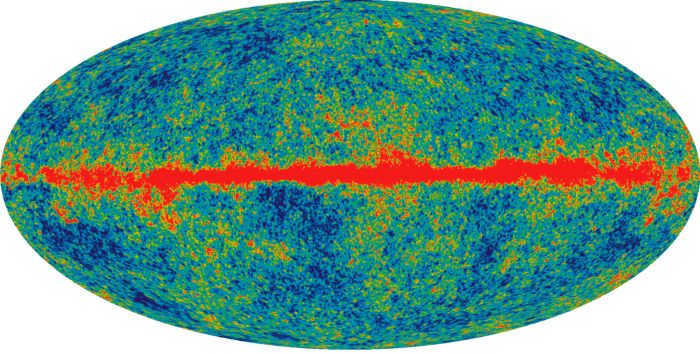
At present, scientists are unable to definitively answer this question. Humanity lacks the technology to peer into the vast expanse and determine whether space has boundaries or not. Nonetheless, several observatories are actively investigating this matter. There are two possible answers to this query: the Universe is either finite or infinite.
If we consider the first scenario to be true, relic radiation plays a crucial role in determining the theoretical boundaries of the universe. The light emitted after the occurrence of the Big Bang has stretched out over a distance of approximately 93 billion years. This distance can be perceived as the limit of the Universe.
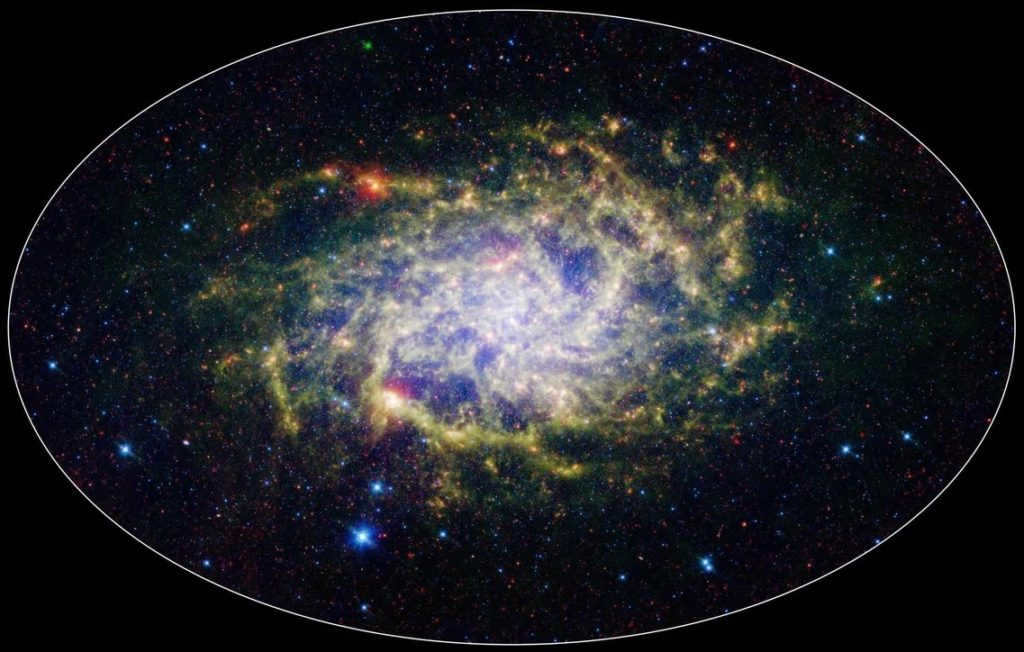
The second choice implies that space is boundless. Thus, if an individual travels in any direction at a rapid pace, they will encounter an infinite number of galaxies, stars, and planets. Additionally, scientists firmly believe that in such a scenario, there might exist an identical solar system with an Earth that is inhabited by the exact same individuals. This is because if space is limitless and contains an unlimited number of planets, the likelihood of there being a duplicate of Earth somewhere approaches infinity.
Fascinating fact: The concept of space’s infinity is frequently utilized in science fiction movies, books, and comics, where the protagonist encounters their doppelgänger from another dimension.
In the future, it is possible that humanity will ascertain whether the universe has a definitive endpoint. However, at present, there are only conjectures.
Possible Explanations for the Origin of the Universe


In addition to the Big Bang, there exist numerous theories regarding the origin of the universe. Let’s explore some of the most intriguing ones:
- The religious theory asserts that the universe was created by a divine being, with each religion offering its unique explanation of the creation process.
- The stationary theory posits that the universe remains constant in size and has existed for eternity.
- The cyclical theory suggests that the cosmos undergoes an endless cycle of birth and destruction.
- The cosmological theory postulates that the universe is infinite.
- The string theory proposes that new universes can arise within existing ones through quantum fluctuations and sufficient energy.
Despite the abundance of theories elucidating the genesis of the cosmos, the Big Bang holds sway among scientists. This conjecture expounds upon the genesis of substances and matter and encompasses considerably fewer lacunae. As a result, it proves more amenable for scientists to manipulate and draw rational deductions.
Fascinating trivia: Einstein, too, had his own hypothesis regarding the inception of the universe, positing that it is finite. Nonetheless, this clashed with the theory of relativity, which Einstein was also instrumental in formulating.
The Evolution of Understanding the Universe
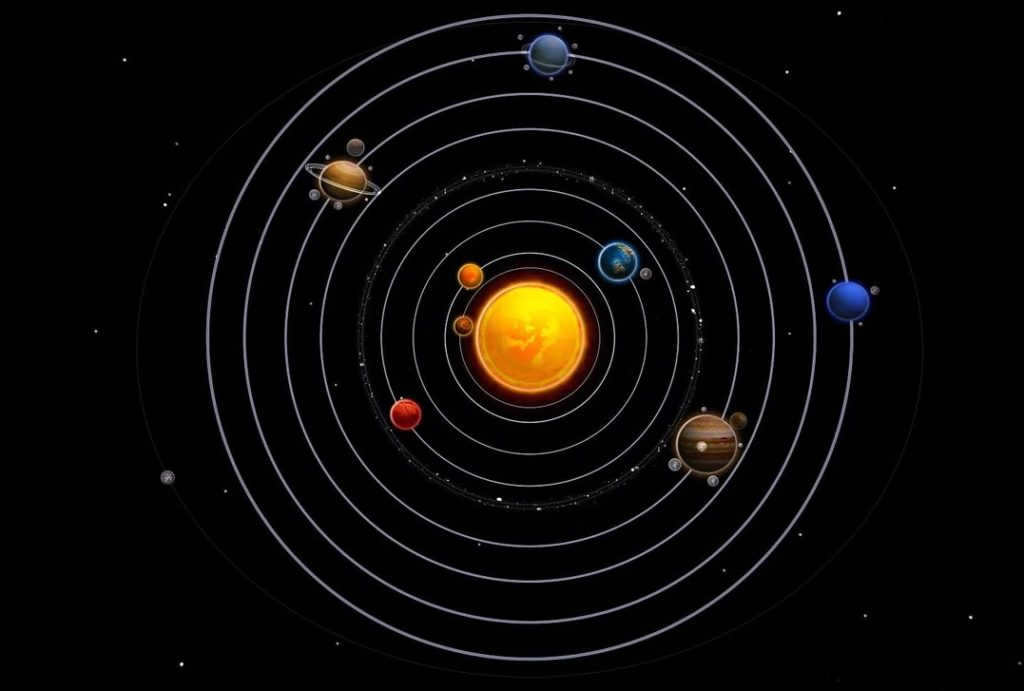
Four thousand years ago, individuals were already engaged in the study of the cosmos. Ancient Babylonians created maps of constellations and depictions of the starry expanse. Prior to the 16th century, astronomers held the belief that the Earth was at the center of the universe. However, Galileo Galilei, armed with the invention of the telescope, managed to demonstrate that the planets orbit the Sun. Additionally, the scientist made the remarkable discovery of numerous galaxies, such as the Milky Way, within the celestial sphere. This greatly expanded humanity’s comprehension of the vast universe.
Over the course of several centuries, astronomers dedicated themselves to the examination of celestial objects. In 1929, Hubble provided confirmation that galaxies were indeed moving away from one another and that space itself was expanding. Today, individuals utilize cutting-edge technology to gather as much information as possible about the cosmos.





